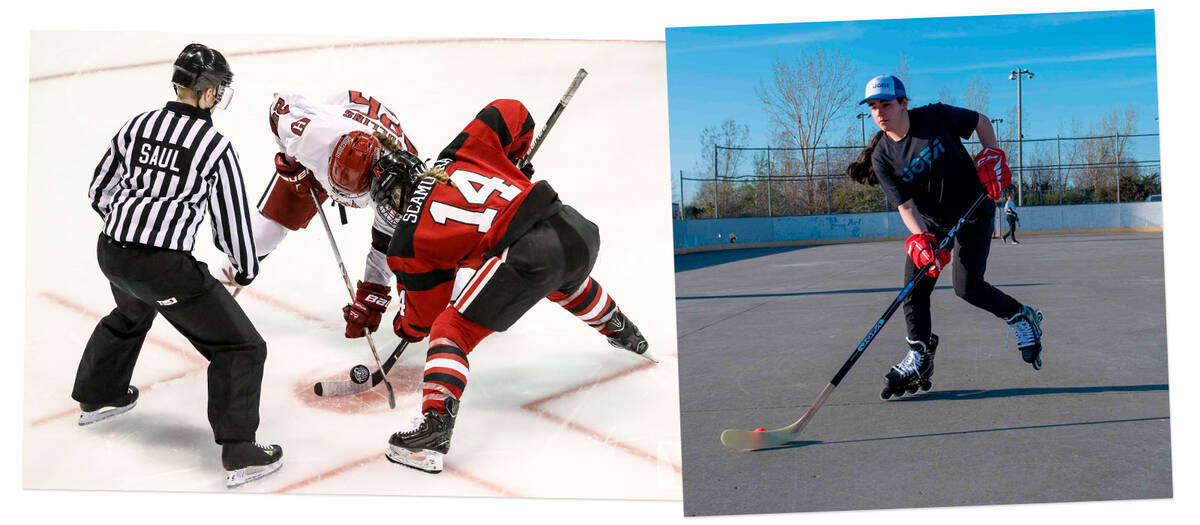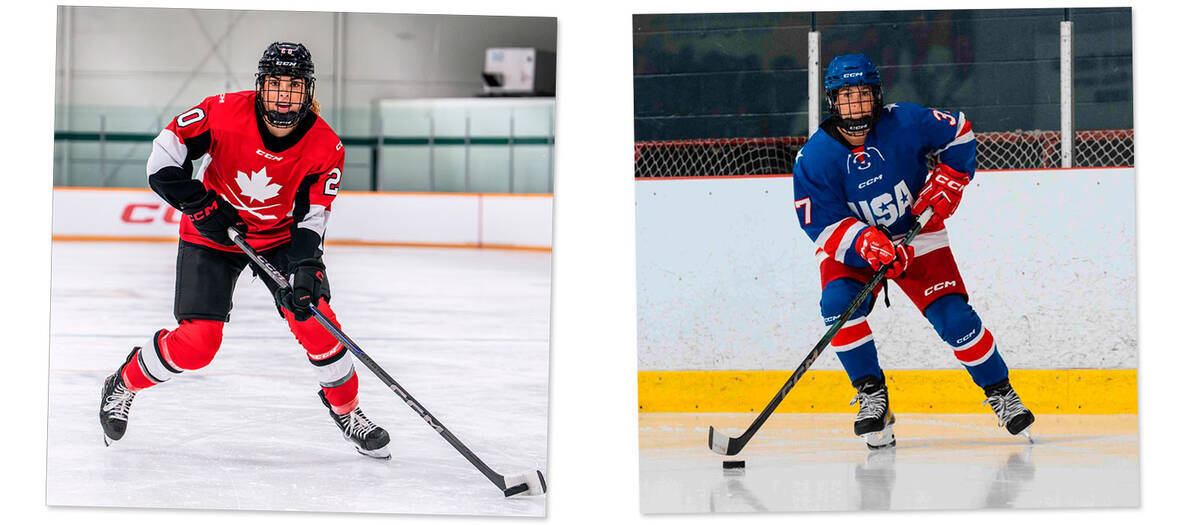Guide to Buying Hockey Sticks - Find the Perfect Stick for Your Game

Choosing a new hockey stick is all about matching it to your level, height and style of playing. You need to consider the size, the flex and the surface, you’ll be playing on.
With so many options available, finding the best hockey stick for your needs can seem like an overwhelming task. Whether you’re playing roller hockey or ice hockey, having the right stick is crucial for your performance. Here’s a list of key considerations to help you select the perfect hockey stick based on your style, skill level, and playing environment.
- Surface Type: Choose the stick based on where you’re playing—ice, roller, or street.
- Material: Choose a stick that is made of a durable but light material.
- Length: Measure the stick based on your height and playing style.
- Flex: Pick a flex based on your strength and preferred shot type.
- Handedness: Choose left or right based on your grip style.
To get in-depth information about these aspects, continue reading!
Overview
Types of Hockey Sticks: Ice, Roller, and Street

One of the first things to consider is whether you’ll be using the stick for ice hockey, roller hockey, or street hockey. The stick you choose depends heavily on the surface you play on, as well as your playing style.
- Hockey sticks for ice hockey: Designed for use on ice
- Hockey sticks for roller hockey: Designed for roller hockey surfaces like smooth asphalt or sport court tiles.
- Hockey sticks for street hockey: Built for tough outdoor surfaces like asphalt, street hockey sticks are typically made of durable materials to withstand wear and tear.
- Multi-purpose hockey sticks: Many hockey sticks are great for all-round purposes, so if you play a bit of street and a bit of indoors hockey, you can get away with buying just one stick.
When you read a given product description for a hockey stick, pay attention to whether it is made for a specific type of hockey or surface.
Can You Use Ice Hockey Sticks for Roller Hockey?
If you have an ice hockey-specific stick, we do not advice to take it for a game of roller hockey because you will wear down the hockey stick blade a lot faster on the rougher surfaces. It is definitely recommended that you use the stick for the purpose that was intended by the manufacturer if you want to have a useable hockey stick for as long as possible.
What Are Hockey Sticks Made Of?

Hockey sticks are made from materials such as carbon fiber, fiberglass, Kevlar, and wood—with wood being the original material from which hockey sticks were made. These days, it’s common to encounter sticks made of composite materials, often a mix of fiberglass and carbon fiber.
The blade of a hockey stick isn’t made from the exact same material as the shaft. This is because the shaft needs to be durable yet lightweight, while the blade material must be strong enough to withstand the hard impacts of pucks and balls.
Hockey stick shafts need to have a high strength-to-weight ratio and be flexible enough to bend without breaking during intense matches. Different composite materials are optimized for these properties, though as you might expect, these are also characteristics of certain hardwoods.
Hockey stick blades must also endure very hard impacts without adding too much weight for the player to handle. They can be made from carbon fiber, fiberglass, wood, or plastic. It’s crucial that both the material and the shape of the blade help the player control the puck and shoot with precision.
Composite vs. Wood Hockey Sticks
- Wood hockey sticks: Classic and sturdy, wood sticks are often heavier but provide a traditional feel. They're often used in street hockey or roller hockey because of their durability.
- Composite hockey sticks: Made from materials like carbon fiber, Kevlar, or fiberglass, composite sticks are lighter and more flexible. They’re typically used for ice hockey but are also great for roller hockey if you want a high-performance stick. Composite sticks are usually more expensive but provide better energy transfer for shots and superior control.
When browsing our selections of roller hockey stick and ice hockey sticks, you can filter the categories by shaft material and blade material.
Choosing the Right Hockey Stick Length for You

Getting the right hockey stick length is key to maximizing your control and the power of your shots. You should pick your hockey stick length based on several factors, including your height, skill level, playing style, and personal preferences.
Short Vs. Long Hockey Stick
A shorter hockey stick is easier to control and it is more agile whereas a longer stick lets you cover a wider range. Often, the more offensive players go for shorter sticks whereas defensive hockey players go for longer sticks.
Getting the Correct Hockey Stick Length

Place your arm along the side of your body and, while wearing your skates, grab the end of the stick. Bend your arm slightly, keeping it close to your body. If the toe of the blade points slightly upward, the stick length is correct.
An alternative method is to stand with or without your skates on, and holding the stick vertically towards your chin.
- With skates on: The end of the stick should not reach above your chin.
- Without skates on: The end of the stick should not reach above the tip of your nose.
Many hockey players buy sticks that are slightly too long so they can cut them to their preferred length. This is a great tip if you know what you’re doing, but be aware that cutting the stick will void any warranty.
You can filter our selections of roller hockey sticks and ice hockey sticks by length, giving you the opportunity to see which sticks we have available in your favored length. We also recommend taking a good look at our hockey stick size guide if you have any doubts.
- Discover our hockey stick size guide
- Discover our selection of ice hockey sticks
- Discover our selection of roller hockey sticks
What Is Hockey Stick Flex?
Flex refers to how much a hockey stick bends when force is applied, for example when you take a shot. The higher the flex number, the stiffer the stick. Choosing the right flex depends on your strength and the type of shot you want to make.
- Lower flex: Makes it easier to shoot with more finesse and accuracy. Lower flex is usually recommended for less experienced or younger players because they are easier to work with.
- Higher flex: Offers the ability to unleash some super hard shots with extra force. Higher flex ratings are typically used by more advanced hockey players.
What Is the Purpose of the Hockey Stick Blade Curve?

The blade curve is another critical aspect of the hockey stick. It affects how you handle the puck or ball when you shoot, pass and dribble, so it is definitely worth to keep an eye on it. Trying out different blade curves can help you to find out what feels most natural for you and your style of playing.
By creating a ‘pocket’ for the ball or puck, the blade curve enhances control over ball/puck, and it allows you to have more consistent and powerful shots.
Choosing Between a Left-Handed or Right-Handed Hockey Stick

Choosing between a left-handed or right-handed hockey stick depends on which hand you use to guide the stick. If your right hand is on top of the stick, you’ll want a left-handed stick (and vice versa). The side you shoot from has nothing to do with whether you're naturally left or right-handed—it’s all about what feels most comfortable for you.
If you’re in doubt, grab a hockey stick with both hands, and position yourself as though you were about to take a shot with it. Choose a...
- Left-handed hockey stick: If the puck is at your left side and the right hand is at the top of the stick, while the left hand is closest to the blade.
- Right-handed hockey stick: If the puck is at your right side and the left hand is at the top of the stick, while the right hand is closest to the blade.
In the video below, Nicklas demonstrates how you determine whether you are a left handed or right handed hockey player.
Don't forget to check out or complete selections for roller hockey and ice hockey respectively. We have everything you need for hockey:
